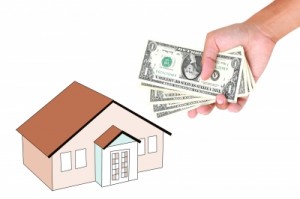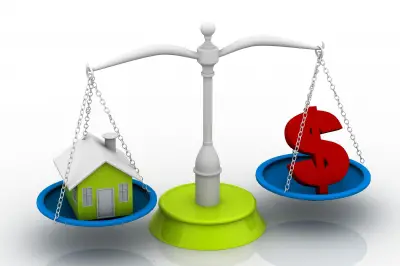In finance, subprime lending (also referred to as Poor Credit Lending) means making loans to people who may have difficulty maintaining the repayment schedule, due to poor money management skills or reflecting setbacks such as unemployment, divorce, medical emergencies, etc. These loans generally have higher interest rates and less favorable terms in order to compensate the lender for the higher credit risk. Although there is no single, standard definition, in the United States subprime loans are usually classified as those where the borrower has a FICO score below 640. The term was popularized by the media during the subprime mortgage crisis or “credit crunch” of 2007. Those loans which do not meet Fannie Mae or Freddie Mac underwriting guidelines for prime mortgages are called “non-conforming” loans.
 Proponents of subprime lending maintain that the practice extends credit to people who would otherwise not have access to the credit market. Professor Harvey S. Rosen of Princeton University explained, “The main thing that innovations in the mortgage market have done over the past 30 years is to let in the excluded: the young, the discriminated-against, the people without a lot of money in the bank to use for a down payment.”
Proponents of subprime lending maintain that the practice extends credit to people who would otherwise not have access to the credit market. Professor Harvey S. Rosen of Princeton University explained, “The main thing that innovations in the mortgage market have done over the past 30 years is to let in the excluded: the young, the discriminated-against, the people without a lot of money in the bank to use for a down payment.”
Opponents say that the proliferation of sub-prime loans is what caused the crisis in 2007 and almost brought down the banking system and therefore it should not be promoted. Sub-prime mortgages often featured “teaser rates” that kept initial monthly payments artificially low, only to have them increase significantly later in the mortgage. The vast majority of mortgages were originated by third parties and then packaged and sold to investors who often did not understand the associated risk. Features such as this were never adopted by major Canadian mortgage lenders thus the sub-prime market did not take hold in Canada to the extent that it did in the U.S. In Canada, most mortgages are originated and retained by institutions whose goal is to maintain a long-term relationship with the borrower. Thus the Canadian banks escaped the sub-prime crisis virtually unscathed.
What is Sub-Prime or Poor Credit?
The term subprime refers to the credit quality of the individual borrowers, who have poor credit histories and a greater risk of loan default than prime borrowers. As people become economically active, records are created relating to their borrowing, earning and lending history. This is called their credit rating. Subprime borrowers have credit ratings that might include:
- Limited credit history (so the lender simply assumes the worst), or
- Excessive debt in relation to the amount of income
- No assets that could be used as collateral in case of default
- A history of late or missed payments
- Failures to pay debts completely (default debt), and
- Bankruptcy or county court judgments.
Lenders’ standards for determining risk categories may also consider the size of the proposed loan, and also take into account the way the loan and the repayment plan is structured, if it is a conventional repayment loan, or a more exotic loan such as an interest only loan or some other arrangement. The originator is also taken into consideration. Because of this, it is possible for a loan to a borrower with “prime” characteristics (e.g. high credit score, low debt) to be classified as subprime.
A borrower with an outstanding record of repayment on time and in full will get what is called an A-paper loan and will qualify for the best mortgage rates. Borrowers with less-than-perfect credit ‘scores’ might be rated as meriting an A-minus, B-paper, C-paper or D-paper loan. Interest rates will increase progressively for less reliable payers to allow the company to ‘share the risk’ of default equitably among all its borrowers. A-minus is traditionally defined as mortgage borrowers with a FICO score of below 680 while Alt-A is traditionally defined as loans lacking full documentation aka. NINJA loans. The value of U.S. subprime mortgages was estimated at $1.3 trillion as of March 2007, with over 7.5 million first-lien subprime mortgages outstanding.
Subprime Crisis
The subprime mortgage crisis arose from ‘bundling’ American subprime and American regular mortgages which were traditionally isolated from, and sold in a separate market from prime loans. These ‘bundles’ of mixed (prime and subprime) mortgages were the basis asset-backed securities so the ‘probable’ rate of return looked superb (since subprime lenders pay higher premiums, and the loans were anyway secured against saleable real-estate, and so, theoretically ‘could not fail’). Many mortgages had a low interest for the first year, and poorer buyers ‘swapped’ regularly at first, but finally such borrowers began to default in large numbers. The inflated house-price bubble burst, property valuations plummeted and the real rate of return on investment could not be estimated, and so confidence in these instruments collapsed, and all were considered to be almost worthless toxic assets, regardless of their actual composition or performance.
To avoid high initial mortgage payments, many subprime borrowers took out adjustable-rate mortgages (or ARMs) that give them a lower initial interest rate. But with potential annual adjustments of 2% or more per year, these loans can end up costing much more. You can use a Mortgage calculator to find out how much you can save on different mortgages by accelerating your payments. For instance, a $100,000 loan at a 4% interest rate for 30 years equates to a payment of about $477 a month. But the same loan at 6% would cost $600 a month or 25.8% more. So a relatively small increase in interest rates for individuals who are got a mortgage for the maximum they could afford could easily push them over the edge financially.
See Also:
- Financial Jargon – Investment Terminology for Beginners
- Mortgage Jargon
- 5 Good Reasons To Get Title Insurance
- Rebuilding and Fixing Your Credit in 5 Steps
Recommended by Amazon:
- The Subprime Solution: How Today’s Global Financial Crisis Happened, and What to Do about It
- Mortgages For Dummies, 3rd Edition
- Home Buying For Dummies, 3rd edition
- Mortgage Ripoffs and Money Savers: An Industry Insider Explains How to Save Thousands on Your Mortgage or Re-Finance
Image courtesy of Sujin Jetkasettakorn / FreeDigitalPhotos.net


